History
Kenneth Grahame's mother died when he was five years old. He then went to live with his grandmother and uncle at their house, The Mount, which was a large country house overlooking the Thames in Cookham Dean. His uncle, David, introduced him to the rustic locality and this was influential in his later creation of Wind in the Willows. [1]
On his retirement from the Bank of England in 1908, Grahame returned to Cookham Dean, staying in a house called Mayfield. An inspiration for the character, Mr Toad, was the local philanthropist Colonel Ricardo – an ebullient character who owned the first motor car in the village – a yellow Rolls-Royce Silver Ghost. He would offer lifts to the locals and so was well-known as a motoring enthusiast. Ricardo lived at Lullebrook Manor on Formosa Island, which is a large eyot in the Thames. [2]
In October 1908, The Wind in the Willows was published as a novel for children featuring an array of anthropomorphic characters, including Rat (a water vole), Mole, Badger and Toad. [3] Toad lives in a house on the edge of the River Bank, Toad Hall. The novel was almost universally condemned by critics, but achieved very considerable sales. [4] It has been in print continuously since its publication and has been adapted for plays, a ballet, [5] films and musicals. [6] Originally published as plain text, it has subsequently been illustrated by a number of notable artists including Paul Bransom, Arthur Rackham and E. H. Shepard. [7]
The decline, loss and recovery of Toad Hall, which forms the trajectory of the novel, has been seen as an allegory for the state of England at the time of the book's writing. Toad, through his profligacy and caprice, threatens the prevalent social order, "letting down his class and exposing it to danger". He symbolises a decadent aristocracy that "squanders his inheritance [and is] indifferent to his house"; the weasels and stoats,which overrun the hall, are the (working) "class enemy"; while Badger, Rat and Mole are the "bourgeois intelligentsia" who alone can save the "Ancestral Home" and restore the social status quo. Toad Hall itself "dominates", and symbolises, the Arcadian pastoral landscape that is The Wind in the Willows, in the same relationship as Woburn Abbey or West Wycombe Park to their Reptonian parklands.
Description
Grahame's description of Toad Hall is sparse: "a handsome, dignified old house of mellowed red brick, with well-kept lawns reaching down to the water's edge". Its owner is in no doubt as to its merits: "'Finest house on the whole river,' cried Toad boisterously. 'Or anywhere else, for that matter.'" The hall has a "very old banqueting-hall, "stables stand to the right of the house, as viewed from the river" and a "large boat-house" is located on the riverbank. Despite Toad's pride in, or vanity regarding, his ancestral home, he takes little care over its maintenance. The grounds, and the boathouse are filled with discarded cars and boats, abandoned by Toad as he moves on to his latest passion, caravanning. An ancient underground passage, unknown to Toad but vouchsafed to Mr Badger by Toad's father, and of critical importance to the novel's denouement, [14] "leads from the river bank ..., right up into the middle of Toad Hall". Using the tunnel to gain access to the house, the ensuing battle between Toad's supporters and the weasels has been described as a "masterpiece of asymmetrical warfare". [16]
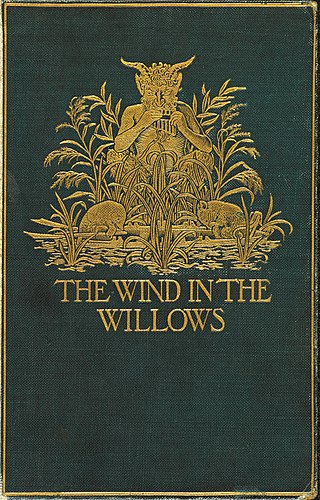
The Wind in the Willows is a classic children's novel by the British novelist Kenneth Grahame, first published in 1908. It details the story of Mole, Ratty, and Badger as they try to help Mr. Toad, after he becomes obsessed with motorcars and gets into trouble. It also details short stories about them that are disconnected from the main narrative. The novel was based on bedtime stories Grahame told his son Alastair. It has been adapted numerous times for both stage and screen.

Toad of Toad Hall is a play written by A. A. Milne – the first of several dramatisations of Kenneth Grahame's 1908 novel The Wind in the Willows – with incidental music by Harold Fraser-Simson. It was originally produced by William Armstrong at the Playhouse Theatre, Liverpool, on 21 December 1929. It was given in the West End the following year, and has been revived frequently by many theatrical companies.

Kenneth Grahame was a British writer best remembered for the classic of children's literature The Wind in the Willows (1908). Scottish by birth, he spent most of his childhood with his grandmother in England, following the death of his mother and his father's inability to look after the children. After attending St Edward's School in Oxford, his ambition to attend university was thwarted and he joined the Bank of England, where he had a successful career. Before writing The Wind in the Willows, he published three other books: Pagan Papers (1893); The Golden Age (1895); Dream Days (1898).

Cookham is a historic Thames-side village and civil parish on the north-eastern edge of Berkshire, England, 2.9 miles (5 km) north-north-east of Maidenhead and opposite the village of Bourne End. Cookham forms the southernmost and most rural part of the High Wycombe urban area. With adjoining Cookham Rise and Cookham Dean, it had a combined population of 5,779 at the 2011 Census. In 2011, The Daily Telegraph deemed Cookham Britain's second richest village.
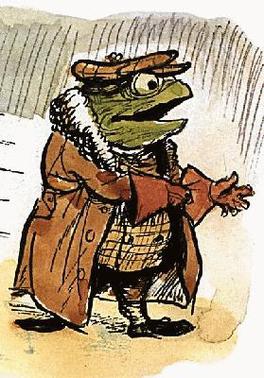
Mr. Toad, of Toad Hall, is one of the main characters in the 1908 novel The Wind in the Willows by Kenneth Grahame.
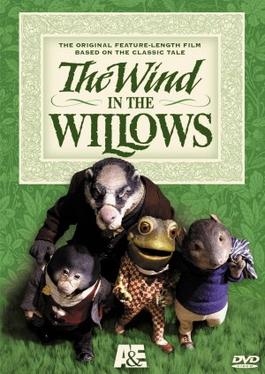
The Wind in the Willows is a 1983 British stop motion animated film produced by Cosgrove Hall Productions for Thames Television and aired on the ITV network. The film is based on Kenneth Grahame's classic 1908 novel The Wind in the Willows. It won a BAFTA award and an international Emmy award.
Sir Charles Augustin Hanson, 1st Baronet of Fowey was a British politician and 590th Lord Mayor of London.

Mapledurham House is an Elizabethan stately home located in the civil parish of Mapledurham in the English county of Oxfordshire. It is a Grade I listed building, first listed on 24 October 1951.

Colonel Francis Cecil Ricardo, CVO, CBE was a British Army officer, police officer, and philanthropist.
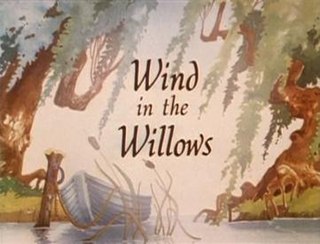
Wind in the Willows is a 1988 Australian made-for-television animated film created by Burbank Films Australia. The film is based on Kenneth Grahame's 1908 English children's novel of the same name.
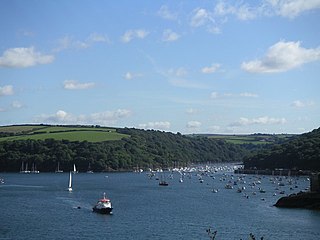
Pont Pill, joins the River Fowey at Penleath Point just below the memorial to Sir Arthur Quiller-Couch at the north-east corner of Fowey harbour. Pont Pill is a tidal river and is only navigable at high water.

Hardwick House is a Tudor house on the banks of the River Thames on a slight rise at Whitchurch-on-Thames in the English county of Oxfordshire. It is reputed to have been the inspiration for E. H. Shepard's illustrations of Toad Hall in the book The Wind in the Willows by Kenneth Grahame, although this is also claimed by Mapledurham House, Fowey Hall Hotel, Foxwarren Park and Fawley Court.

Odney is a common in the Thames, part of the civil parish of Cookham, in the English county of Berkshire, and occupies most of the Formosa Island eyot. The island may have been sacred to the main Saxon god, Woden, as "Wodenes-Eye".

The Wind in the Willows is a 1987 American animated musical television film directed by Arthur Rankin, Jr. and Jules Bass, co-founders of Rankin/Bass Productions in New York, New York. It is an adaptation of Kenneth Grahame's 1908 novel The Wind in the Willows. Set in a pastoral version of England, the film focuses on four anthropomorphised animal characters and contains themes of mysticism, adventure, morality, and camaraderie. The film features the voices of Charles Nelson Reilly, Roddy McDowall, José Ferrer, and Eddie Bracken. The screenplay was written by Romeo Muller, a long-time Rankin/Bass writer whose work included Rudolph the Red-Nosed Reindeer (1964), Frosty the Snowman (1969), The Hobbit (1977), and The Flight of Dragons (1982), among others. The film's animation was outsourced to James C.Y. Wang's Cuckoo's Nest Studios in Taipei, Taiwan.

The Willows at Christmas is a children's novel by English writer William Horwood, first published in 1999. It is the fourth book of the Tales of the Willows series, a collection of four sequels to Kenneth Grahame's 1908 novel The Wind in the Willows.
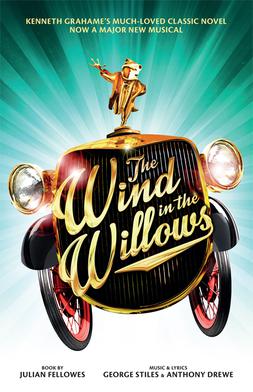
The Wind in the Willows is a musical written by Julian Fellowes, with music and lyrics by George Stiles and Anthony Drewe, based on the 1908 novel of the same name, written by Kenneth Grahame. The musical received its world premiere at the Theatre Royal in Plymouth in October 2016, before transferring to The Lowry in Salford and the Mayflower Theatre in Southampton. The following year the production transferred to the West End's London Palladium, where it was filmed for cinema broadcast.

Foxwarren Park, at Wisley in Surrey, is a Victorian country house and estate. On sandstone Ockham and Wisley Commons, it was designed in 1860 by the railway architect Frederick Barnes for brewing magnate and MP, Charles Buxton. It is a Grade II* listed building.
Toad of Toad Hall is a 1946 British TV adaptation of the 1929 play Toad of Toad Hall by A. A. Milne, itself an adaptation of the 1908 novel The Wind in the Willows by Kenneth Grahame.





















